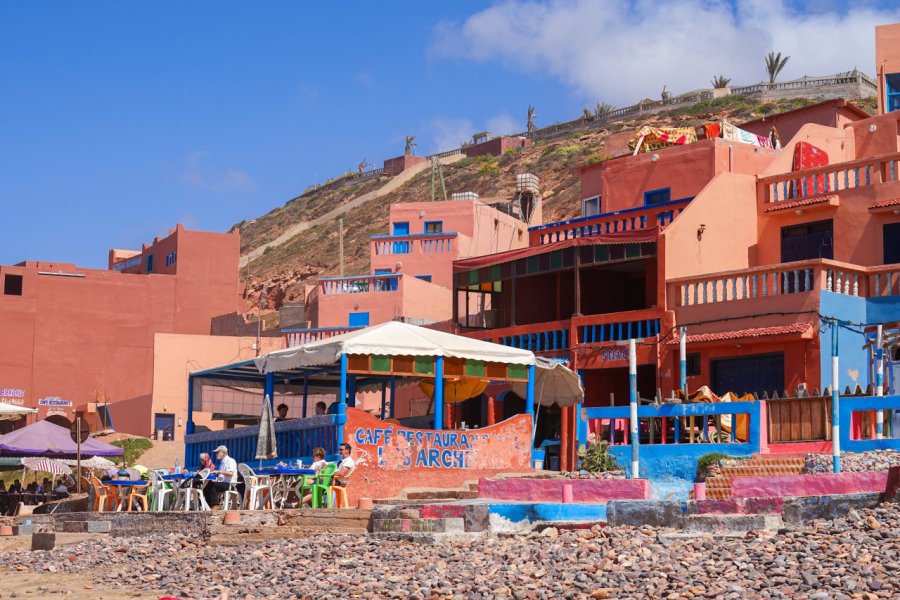Travel Guide Sidi Ifni
Find an accommodation
Advertising
The Spanish settled in Sidi Ifni in 1859, following the Spanish-Moroccan wars, and declared the city the capital of Western Sahara in 1934. Sidi Ifni owes its name to a Muslim saint, whose memorial, erected in 1936, can be seen from the old administrative quarter at the northern end of the beach. When the Spanish withdrew in 1969, the city began a long decline. From being the administrative capital of a colonial province, it became a small fishing port. Of the old Spanish colonial district, only a few buildings remain, which are falling into ruin. The result today is a city built on European style plans, with its wide avenues lined with palm trees, its esplanade with heavy concrete balustrades and its administrative buildings, reflections of a past splendor. Discovering this city is worth the detour for its singular character. There are no shops in this district, which can give the uninformed traveler the impression of entering a ghost town. But its small alleys with white and blue houses wake up at nightfall. The inhabitants stroll quietly, in the parks, sit on the terraces of coffee. Today, Sidi Ifni lives mainly from fishing products which are sold in Agadir and from tourism which tends to develop. Indeed, its large sandy beaches bordered by cliffs attract surfers and tourists in search of tranquility.
What to visit Sidi Ifni?
Weather at the moment
Advertising
Organize your trip with our partners Sidi Ifni
Transportation
Book your plane tickets
Car Rental
Boat rental
Accommodation & stays
Find a hotel
Holiday rental
Find your campsite
Tailor-made trip
Immersion travel
Services / On site
Activities & visits
Find a doctor










